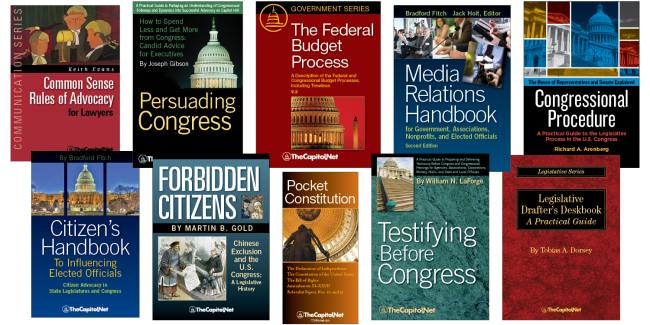From the Congressional Glossary – Including Legislative and Budget Terms
Federal Debt
The Debt Ceiling Explained: Why You Should Care
The federal debt consists of public debt, which occurs when the Treasury of the Federal Financing Bank (FFB) borrows money directly from the public or other funds or accounts, and government debt / agency debt, which is incurred when a federal agency other than the Treasury of the FFB is authorized by law to borrow money from the public or another fund or account.
Total debt of the federal government can increase in two ways. First, debt increases when the government sells debt to the public to finance budget deficits and acquire the financial resources needed to meet its obligations. This increases debt held by the public, i.e., public debt. Second, debt increases when the federal government issues debt to certain government accounts, such as the Social Security, Medicare, and Transportation trust funds, in exchange for their reported surpluses. This increases debt held by government accounts. The sum of debt held by the public and debt held by government accounts is the total federal debt. Surpluses reduce debt held by the public, while deficits raise it. Total federal debt outstanding was $14,251 billion on April 1, 2011.
DEBT LIMIT – A GUIDE TO AMERICAN FEDERAL DEBT MADE EASY.
The total public debt is subject to a statutory limit, 31 U.S.C. 3101.
The gross federal debt, almost all of which is subject to statutory limitation, consists of the debt held by the public plus the debt held by government accounts. The debt held by the public is the total net amount borrowed from the public by the federal government to cover its budget deficits over the years. Usually, analysts use the debt held by the public as the measure of the impact of the federal government’s borrowing on the economy. It is this portion of federal debt that not only reflects the amount of the nation’s wealth invested in federal government securities rather than in private investment, but also determines the level of real resources the government must acquire to make interest and principal payments. The debt held by government accounts is the total net amount of federal debt issued to specialized federal accounts, primarily trust funds. It represents internal transactions of the federal government.
Also see: Budget Deficit / Budget Surplus; Date Shifting / Fiscal Transparency / Fiscal Illusion; Public Debt / Debt Ceiling; § 7.60 Spending, Revenue, and Debt-Limit Legislation, § 7.100 Debt-Limit Legislation, in Congressional Deskbook; Chapter 7.J. Debt Ceiling, in Congressional Procedure.
More
- Statutory Limit on the Public Debt / Budget Control Act of 2011 (CongressionalGlossary.com)
- “‘Real’ Federal Deficit Four Times Official Number,” by Jason Sorens, Pileus, June 5, 2012
- Bureau of the Fiscal Service
- Federal Debt Basics – GAO
- Debt Subject to Limit Graph – Treasury Direct
- “The Debt Limit: History and Recent Increases,” CRS Report RL31967 (48-page PDF
 )
) - “Votes on Measures to Adjust the Statutory Debt Limit, 1978 to Present,” CRS Report R41814 (18-page PDF
 )
) - “Reaching the Debt Limit: Background and Potential Effects on Government Operations,” CRS Report R41633 (30-page PDF
 )
) - “The Debt Limit: The Need to Raise It After Four Years of Surpluses,” CRS Report RS21111 (8-page PDF
 )
) - “Growth in Foreign Holdings of Federal Debt,” CRS Report RL33723 (11-page PDF
 )
) - National Debt Clock – Wikipedia
- Monthly Statement of the Public Debt (MSPD) – Treasury Direct
- “Government Debt and Deficits,” by John J. Seater
- “Public Principles of Public Debt: A Defense and Restatement,” by James Buchanan
- The global debt clock – The Economist
- Country Comparison: Public debt – CIA World Factbook
- “‘Extraordinary Measures’ and the Debt Limit,” CRS Insight IN10837 (6-page PDF
 )
) - “Federal Deficits, Growing Debt, and the Economy in the Wake of COVID-19,” CRS Report R46729 (24-page PDF
 )
) - “The Debt Limit Since 2011,” CRS Report R43389 (44-page PDF
 )
) - The Economic Effects of Financing a Large and Permanent Increase in Government Spending, Congressional Budget Office, CBO Working Paper 57201, March 2021 (42-page PDF
 )
) - “A National Disgrace: The federal budget process threatens America’s future.” By John Steele Gordon, City Journal, February 19, 2021
Courses
- Congressional Operations Briefing – Capitol Hill Workshop
- Drafting Federal Legislation and Amendments
- Writing for Government and Business: Critical Thinking and Writing
- Custom Training
- Congressional Operations Poster, with Federal Budget Process Flowchart
- Federal Budgeting, a Five-Course series on CD
- Congress, the Legislative Process, and the Fundamentals of Lawmaking Series, a Nine-Course series on CD
Publications
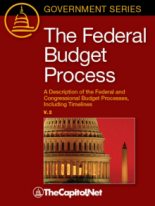
The Federal Budget Process 2E
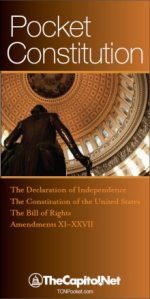
Pocket Constitution
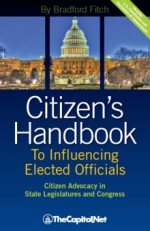
Citizen’s Handbook to Influencing Elected Officials: A Guide for Citizen Lobbyists and Grassroots Advocates
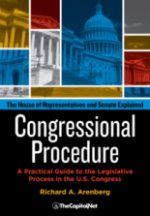
Congressional Procedure
CongressionalGlossary.com, from TheCapitol.Net
For more than 40 years, TheCapitol.Net and its predecessor, Congressional Quarterly Executive Conferences, have been teaching professionals from government, military, business, and NGOs about the dynamics and operations of the legislative and executive branches and how to work with them.
Our custom on-site and online training, publications, and audio courses include congressional operations, legislative and budget process, communication and advocacy, media and public relations, testifying before Congress, research skills, legislative drafting, critical thinking and writing, and more.
TheCapitol.Net is on the GSA Schedule, MAS, for custom on-site and online training. GSA Contract GS02F0192X
TheCapitol.Net is now owned by the Sunwater Institute.
Teaching how Washington and Congress work ™

